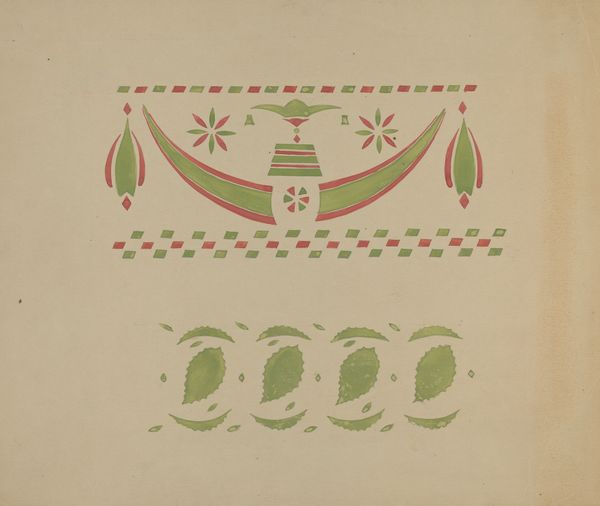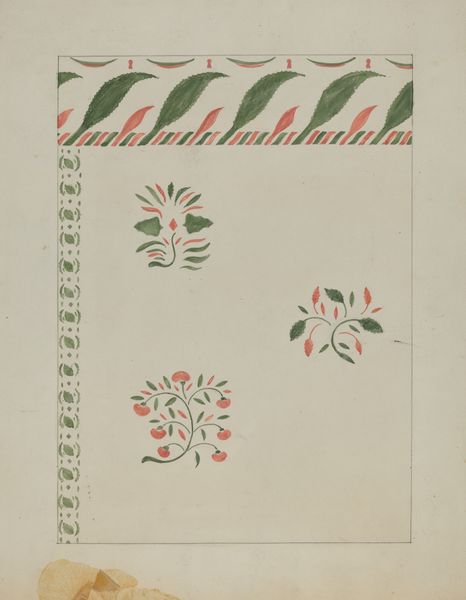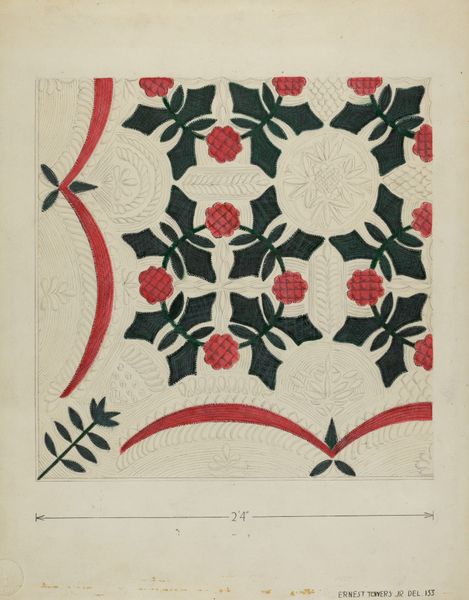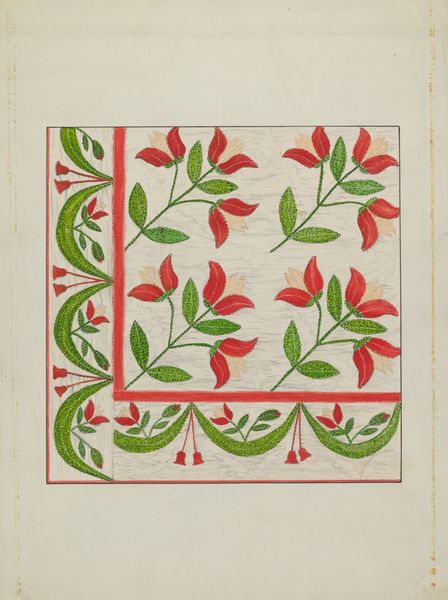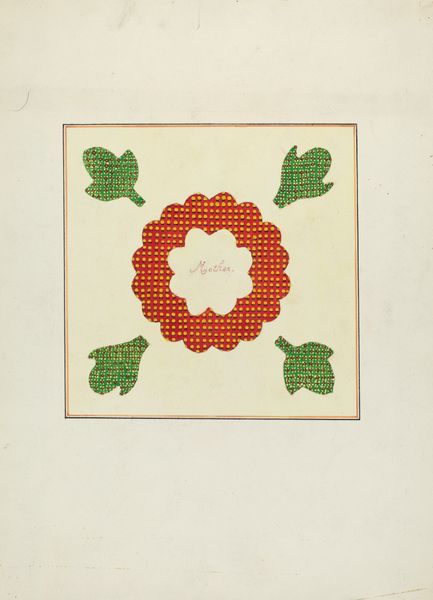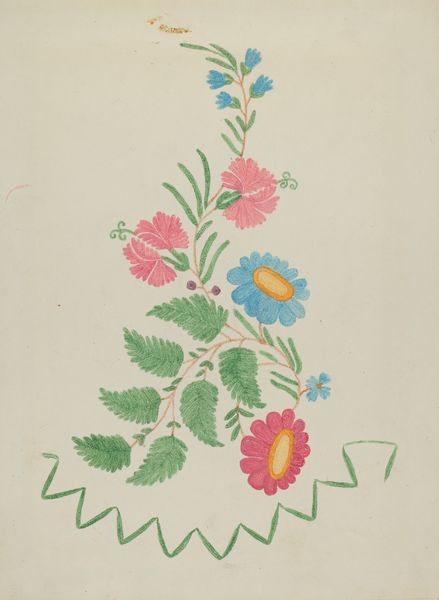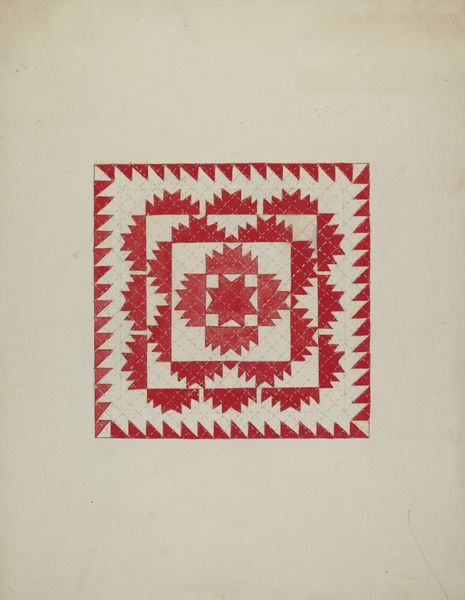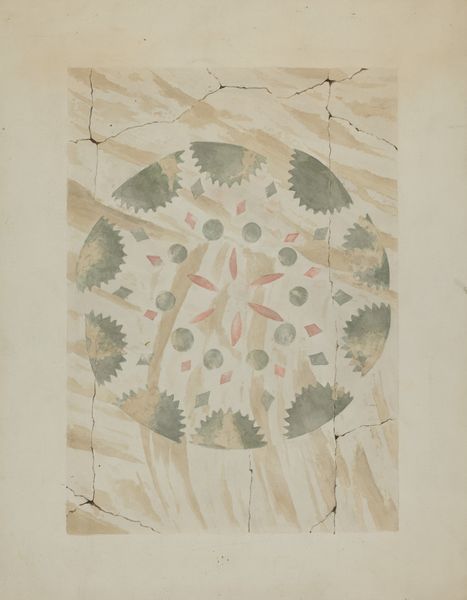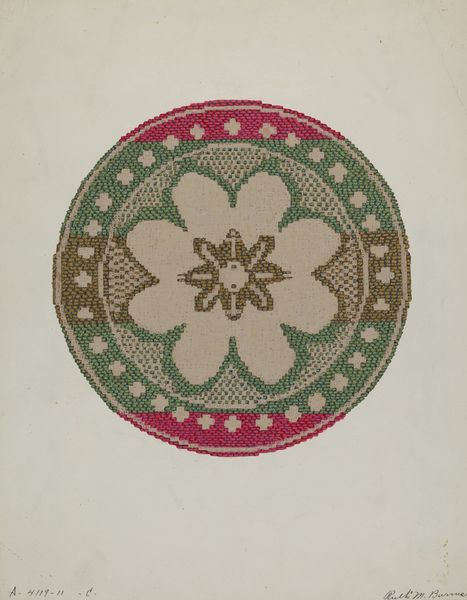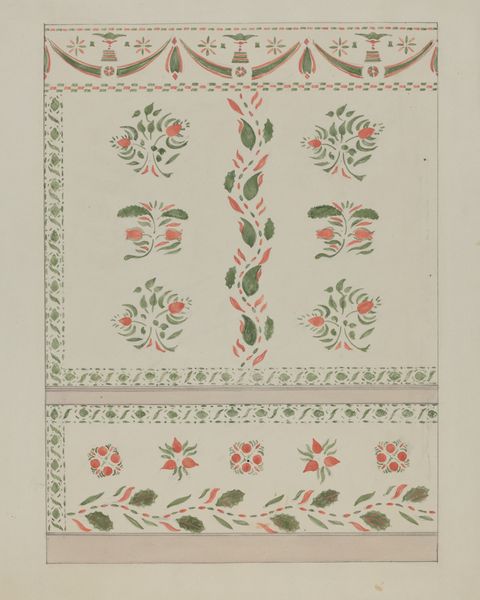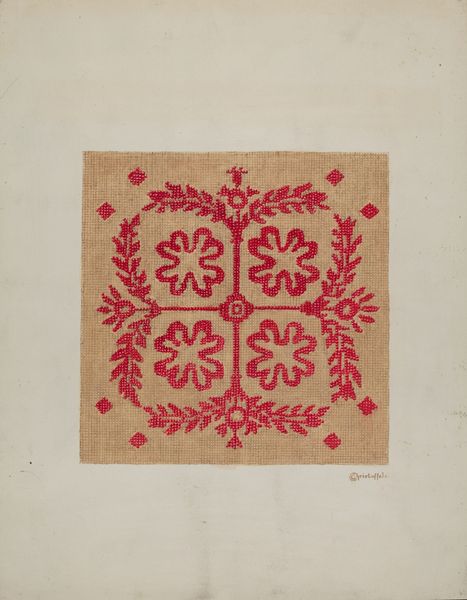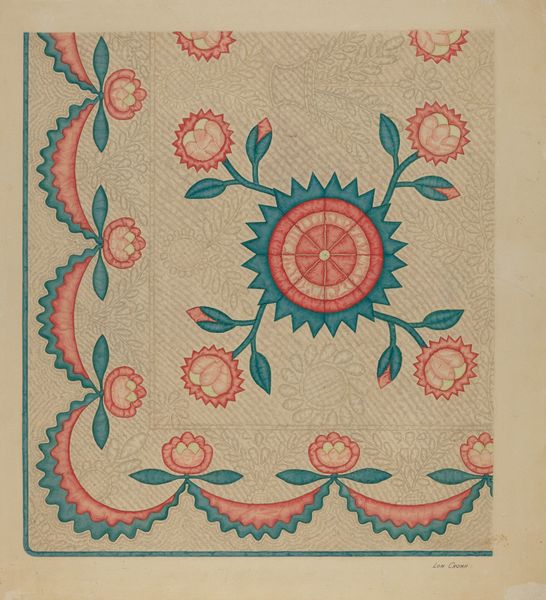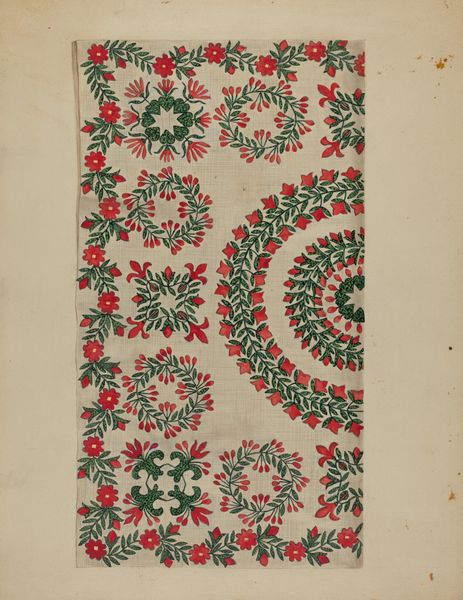
drawing, stencil, paper
#
drawing
#
organic
#
pattern
#
stencil
#
paper
#
organic pattern
#
geometric
#
pattern repetition
#
decorative-art
Dimensions: overall: 34.2 x 28 cm (13 7/16 x 11 in.)
Copyright: National Gallery of Art: CC0 1.0
Curator: What a charming, almost folksy design. I’m immediately drawn to the simple shapes and limited palette. Editor: It’s certainly easy on the eyes. Almost too…peaceful? I feel a certain disconnect between the presumed domesticity of this and the socio-political context of 1936. It seems deliberately apolitical. Curator: This is Ray Holden’s “Stencilled Wall,” dating back to approximately 1936. Executed in stencil on paper, it showcases a repetitive arrangement of organic and geometric shapes. Notice how he employs both positive and negative space to create the pattern. To me, it evokes a sense of home and handcrafted comfort. Editor: Precisely, and that's where my reservations creep in. While I acknowledge its aesthetic appeal, I can't help but wonder whose "home" this domestic scene caters to. Were these designs accessible to all, or did they serve as aspirational imagery for a privileged few, masking the grim realities of the era for many others? I keep thinking of the Great Depression and the rising fascism. Curator: I see your point about socio-economic disparities potentially mirrored in domestic design choices, but I think it's more interesting to explore how these recurring heart motifs may speak to collective aspirations for love and security during uncertain times. What remains persistent in cultural memory regardless of class? Editor: Cultural memory is not a monolith, though. Isn’t that sense of yearning inherently gendered? This type of decorative art was, and largely still is, heavily associated with women's work. Is this a celebration or a further confinement? The very act of stenciling, repeating the same motif, can feel like a visual metaphor for the repetitive labor expected of women in the domestic sphere. Curator: That is a fascinating reading! It also strikes me that the colour combination, red and green, holds complex connotations across many cultures, some related to folklore and nature. But together in this design it looks almost childlike in its simplicity. It creates a feeling of nostalgic optimism, in spite of everything. Editor: The power of domestic imagery and design shouldn’t be underestimated, I think. What this kind of imagery omits can tell us a lot about the complex intersections of gender, class, and politics operating at that time. Thank you for opening up fresh insights, as always! Curator: And thank you. Exploring these designs and their associated motifs helps to shed light on both conscious and unconscious values of the time.
Comments
No comments
Be the first to comment and join the conversation on the ultimate creative platform.
